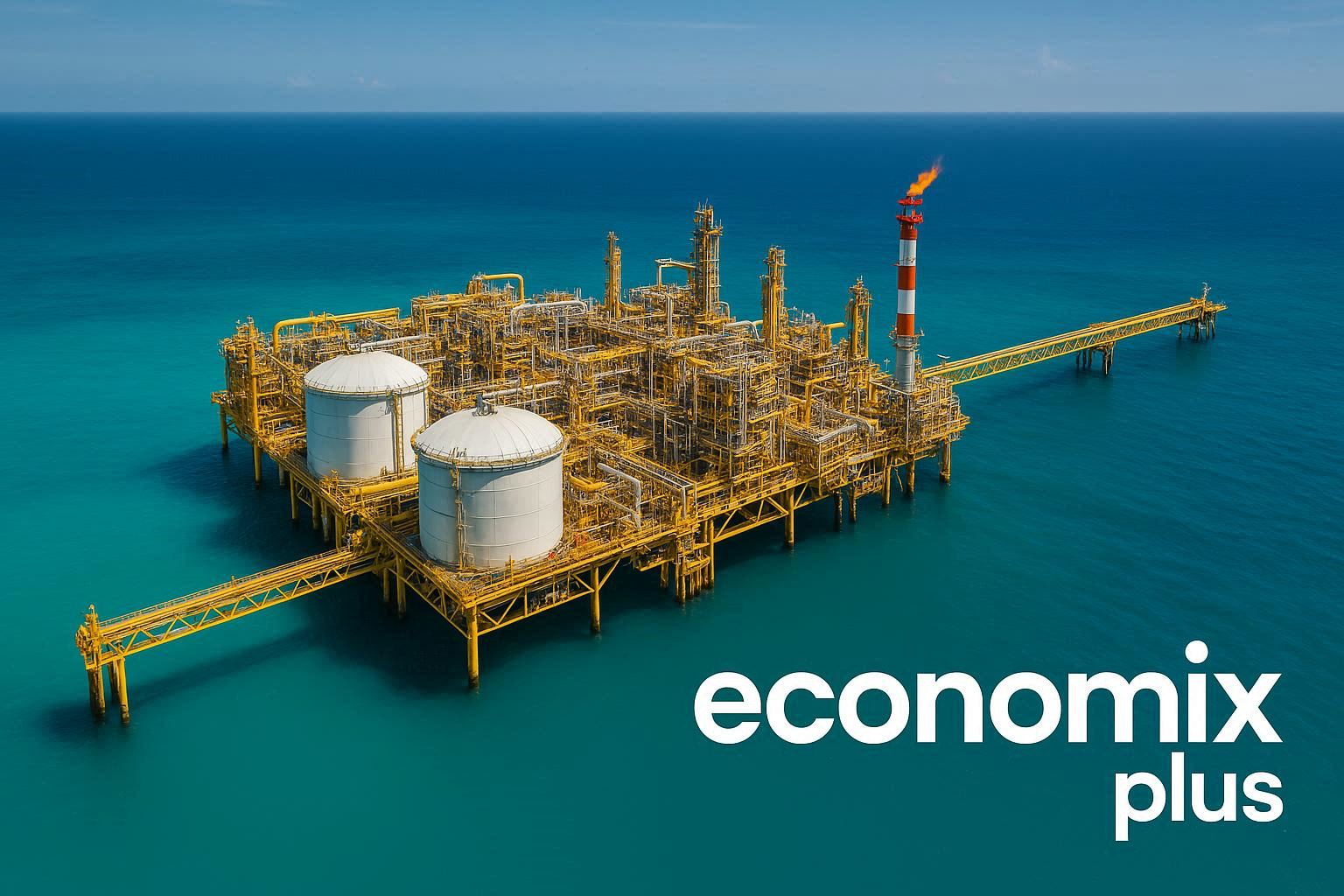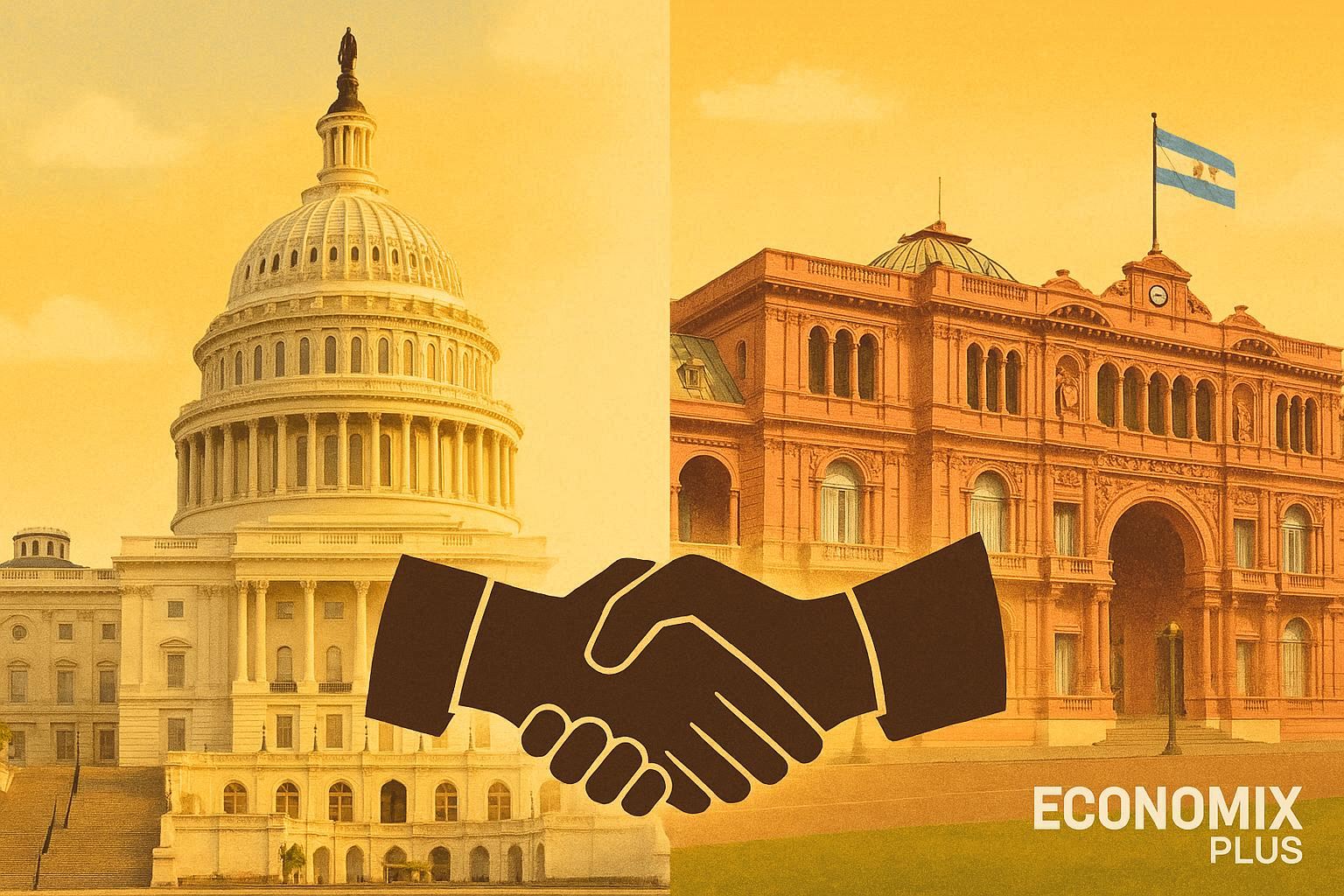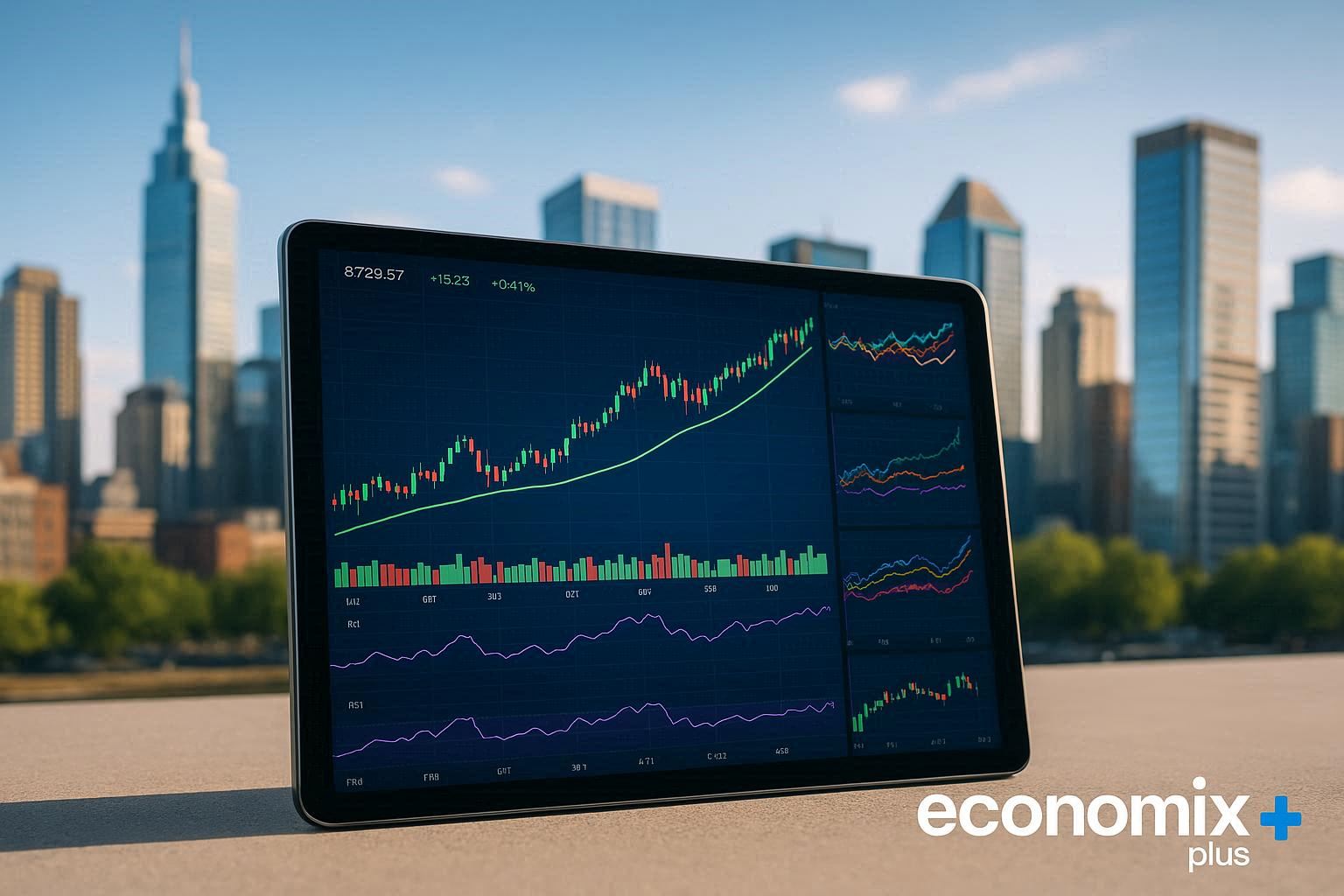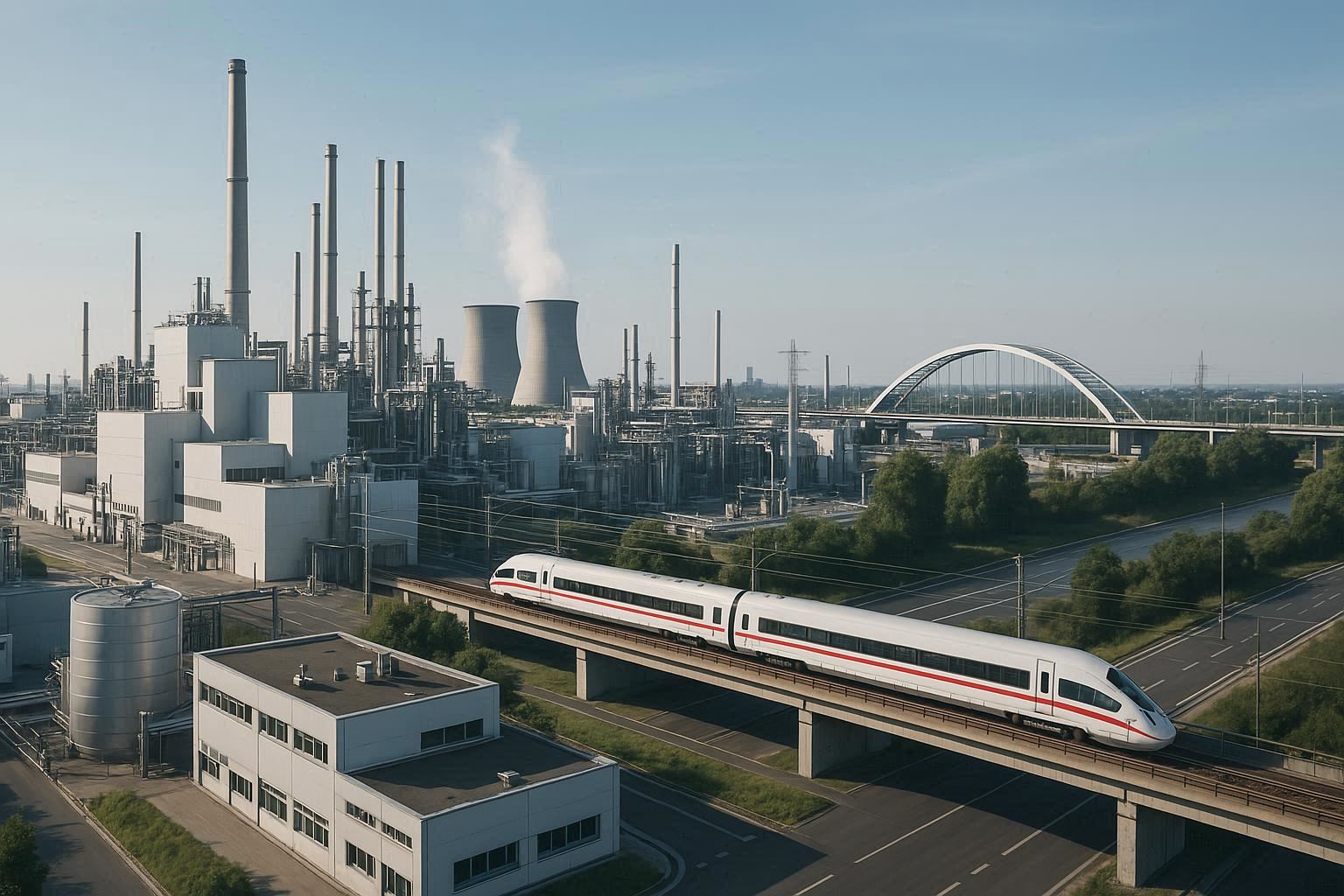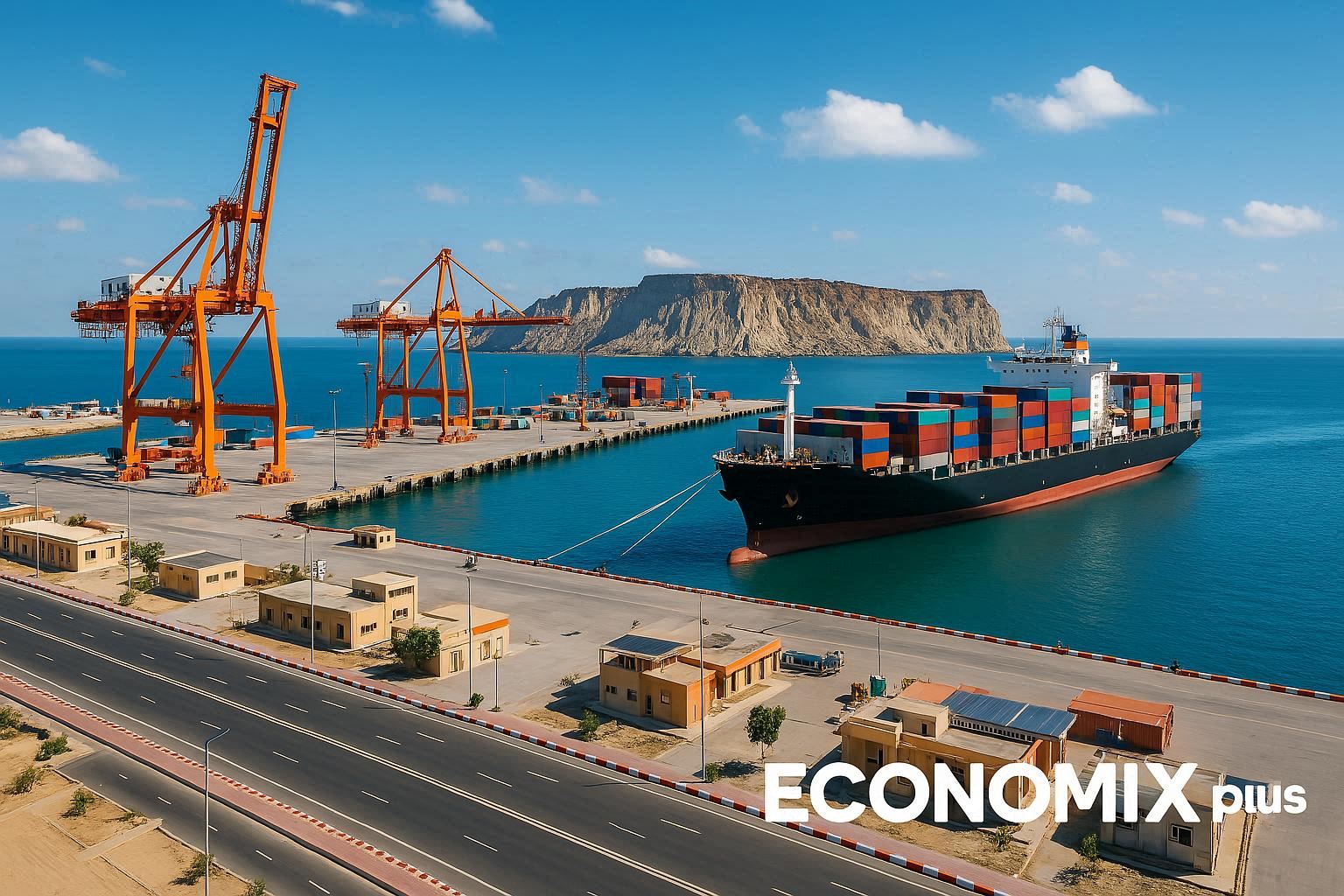As Suriname stands at the threshold of a potential economic boom thanks to major offshore oil discoveries in the Guyana-Suriname Basin, it faces a critical question: will this newfound wealth be a blessing or a curse? Historically, the country’s economy has been vulnerable to fluctuations in commodity prices due to its dependence on natural resources like mining and forestry.
The discovery of oil and gas reserves presents both tremendous opportunities and significant risks. With production expected to reach 200,000 barrels per day by 2028, the country is poised to experience a significant boost in GDP and government revenue. However, it also faces challenges like underdeveloped infrastructure, political instability, and the risk of the “resource curse.”
Key Takeaways
- Suriname’s recent oil discoveries present both opportunities and risks for its economy.
- The country must navigate challenges like infrastructure and political instability.
- Economic diversification is crucial to avoid overdependence on natural resources.
- Institutional reforms and sustainable management practices are key to leveraging natural wealth.
- Suriname can learn from other resource-rich countries that have managed their wealth effectively.
Suriname’s Current Economic Landscape
Suriname’s economic landscape is shaped by its complex history and diverse geography. As you explore the country’s current economic situation, it’s essential to understand the factors that have influenced its development.
Geographic and Demographic Overview
Suriname, located on the northern coast of South America, has a diverse geography that includes rainforests, savannas, and coastal plains. The country’s terrain is characterized by dense forests, which cover much of its land area. You will find that this geography has both advantages and challenges for economic development.
The population of Suriname is approximately 580,000 people, with a mix of ethnic groups, including Creoles, Hindustanis, and Maroons. The capital city, Paramaribo, is home to a significant portion of the population. Understanding the demographic makeup is crucial for addressing the needs and challenges of the economy.
Key Economic Indicators
Suriname’s economy has faced significant challenges in the past, including a period of high inflation and currency fluctuations. The government has implemented various measures to stabilize the economy, including fiscal reforms and efforts to diversify revenue streams. You should note that the country’s economy is heavily reliant on natural resources, including gold, bauxite, and oil.
Key economic indicators show that Suriname has the potential for growth, driven by its natural resource wealth. However, the country must navigate the challenges associated with managing these resources effectively and addressing the problems that have arisen from past political instabilities.
Political Context and Governance
The political landscape of Suriname has been marked by periods of instability, including military coups and authoritarian rule. In the past, the concentration of power has led to governance challenges and human rights abuses. The current government, led by President Chan Santokhi, elected in 2020, faces the task of establishing stable governance while managing the country’s newfound resource wealth.
You will observe that the government is working to address the legacy of past political problems and ensure transparent management of natural resource revenues. This involves implementing institutional reforms to prevent the misuse of power and promote good governance.
The Resource Curse: Understanding Suriname’s Vulnerability
Understanding Suriname’s vulnerability to the resource curse requires examining its historical economic patterns. The country’s economy has been significantly influenced by its rich natural resources, but this has also brought about economic vulnerabilities. To grasp the extent of this vulnerability, it’s essential to delve into the historical patterns of resource dependence, the impact of commodity price fluctuations, and the lessons learned from past economic crises.
Historical Patterns of Resource Dependence
Suriname has experienced three major economic crisis periods since its independence. The first crisis occurred from 1980 to the early 1990s, the second in the mid-to-late 1990s, and the third from 2015 to the present day. In each case, the government’s responses were characterized by short-term fixes rather than addressing the fundamental structural weaknesses in economic systems.
Historically, the government has been too dependent on mining, especially gold, and the energy sector, missing opportunities to diversify revenue streams from tourism and agriculture. This over-reliance on natural resources has been a persistent challenge, as highlighted in various IMF reports over the years.
Impact of Commodity Price Fluctuations
Commodity price fluctuations have had a significant impact on Suriname’s economy. The country’s heavy reliance on natural resources makes it vulnerable to global commodity price changes. During periods of high commodity prices, the government has often increased spending, which can lead to difficulties when prices drop. This pattern has been observed in the past, where booms in gold or oil prices led to increased government revenue, followed by economic strain when prices fell.
Lessons from Past Economic Crises
The recurring economic crises in Suriname demonstrate that having abundant natural resources does not guarantee economic prosperity without effective management and diversification strategies. Past crises have revealed persistent challenges, including weak governance systems, corruption, lack of transparency, an oversized public sector, and insufficient economic diversification.
To avoid repeating past mistakes as Suriname develops its newly discovered oil and gas resources, policymakers must learn from these historical lessons. Implementing effective resource revenue management policies and diversifying the economy are crucial steps. The government must address the structural weaknesses in its economic systems to ensure a more stable economic future.
| Economic Crisis Period | Main Causes | Government Response |
|---|---|---|
| 1980 – Early 1990s | Over-reliance on natural resources, weak governance | Short-term fixes |
| Mid-to-late 1990s | Commodity price fluctuations, lack of diversification | Increased spending during booms |
| 2015 – Present | Dependence on mining and energy sectors, insufficient diversification | Continued reliance on short-term measures |
By understanding the historical patterns of resource dependence and the impact of commodity price fluctuations, Suriname can better navigate its economic challenges. The key lies in learning from past experiences and implementing robust economic management strategies to mitigate the risks associated with the resource curse.
Suriname’s Natural Resource Wealth
As the most forested country in the world, Suriname’s natural resources are not only a source of economic potential but also a critical component of its ecological identity. With forests covering approximately 93% of its land area, Suriname represents an immense natural resource with both economic and ecological value.

Mining Sector: Gold and Bauxite
The mining sector is a significant contributor to Suriname’s economy, primarily through the extraction of gold and bauxite. Gold mining, in particular, has seen a surge in recent years, attracting both local and international investors. However, the sector faces challenges related to environmental impact and the need for more stringent regulations to ensure sustainable practices.
Bauxite mining, while historically significant, has seen fluctuations in production levels. Nonetheless, it remains a vital part of Suriname’s mining activities, with efforts underway to revitalize the sector through modernization and improved extraction techniques.
Emerging Oil and Gas Industry
Suriname is on the cusp of an oil and gas boom, with recent discoveries in offshore blocks sparking significant interest from international energy companies. The potential for oil and gas production to transform Suriname’s economy is substantial, offering new revenue streams and economic opportunities.
However, the emerging oil and gas industry also poses challenges, including the need for robust regulatory frameworks to manage the environmental and social impacts of extraction activities. As Suriname navigates this new frontier, balancing economic development with environmental protection will be crucial.
Forestry and Biodiversity Resources
Suriname’s forests are not only a source of timber but also provide critical ecosystem services, including carbon sequestration, watershed protection, and support for indigenous communities. The country’s coastal ecosystems, including wetlands, mangrove forests, and sandy beaches, support exceptional biodiversity and provide habitats for numerous migratory species.
- Forestry activities contribute to the economy through timber exports, but sustainable management systems are essential to prevent deforestation and preserve biodiversity.
- These forest resources provide ecosystem services beyond timber, including carbon sequestration, watershed protection, and support for indigenous communities whose traditional livelihoods depend on forest resources.
- Suriname’s biodiversity represents a potential source of sustainable economic development through ecotourism, bioprospecting, and payment for ecosystem services, offering alternatives to extractive resource activities.
By leveraging its natural resource wealth in a sustainable manner, Suriname can achieve economic development while preserving its unique ecological heritage.
The Guyana-Suriname Basin: Opportunity and Challenge
As Suriname taps into the vast oil reserves in the Guyana-Suriname Basin, the country faces both opportunities and challenges. The recent discoveries have positioned Suriname for potential economic transformation, similar to its neighbor, Guyana.

Recent Oil Discoveries in Block58
Suriname’s offshore oil discoveries, particularly in Block58, have been significant. These discoveries are not only a testament to the country’s natural resource wealth but also a crucial factor in its future economic planning. The oil and gas industry is expected to bring substantial revenue, potentially transforming Suriname’s economic landscape.
The exploration and production activities in Block58 are being closely watched, as they have the potential to unlock new economic opportunities. The success in this block could lead to further exploration and development in other areas of the Guyana-Suriname Basin.
Potential Economic Impact
The potential economic impact of the oil discoveries is vast. With the oil and gas industry set to become a major contributor to the country’s economy, Suriname is expected to experience significant economic growth. This growth could lead to improved infrastructure, job creation, and increased government revenue.
However, the country must be cautious to manage the influx of revenue effectively, avoiding the pitfalls of the “resource curse” that has affected many other resource-rich nations. Effective management of the oil wealth will be crucial in ensuring that the economic benefits are sustainable and equitable.
Comparing Suriname’s Position to Guyana
Suriname’s situation can be compared to that of Guyana, its neighbor with a similar geological basin. While both countries share the resource-rich Guyana-Suriname Basin, Guyana has advanced further in developing its oil and gas resources. Suriname, however, starts from a somewhat stronger economic situation, with a lower poverty rate and a more diversified economy.
Suriname can learn from Guyana’s experiences, both positive and negative, in managing its oil wealth. By observing Guyana’s case, Suriname can potentially avoid similar challenges in areas such as contract negotiations, revenue management, and local content development. This positions Suriname to make the most of its oil and gas resources while mitigating potential risks.
Infrastructure Challenges Facing Suriname
One of the major hurdles Suriname faces is related to its infrastructure. The country’s infrastructure plays a crucial role in its economic development and the well-being of its people. However, Suriname’s infrastructure is characterized by significant disparities between urban and rural areas.
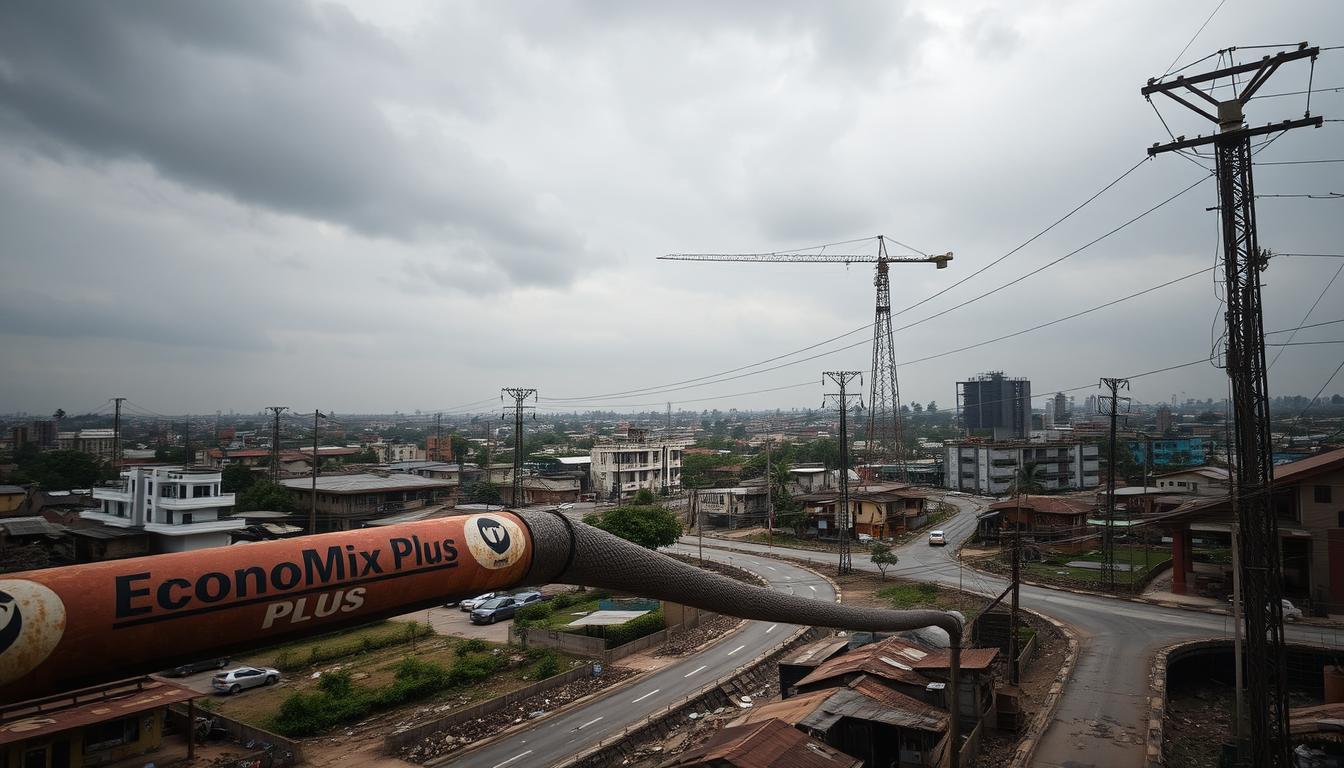
Transportation Networks
Suriname’s transportation network is underdeveloped, particularly in the interior regions. The road network is limited, and many areas are inaccessible during the rainy season. This hampers the transportation of goods and resources from the interior to the coastal areas where they can be processed or exported.
The capital city, Paramaribo, houses approximately 67% of the country’s population, putting a strain on the existing infrastructure. Improving transportation links between urban and rural areas is crucial for balanced development.
Energy and Telecommunications
The energy sector in Suriname faces challenges in terms of reliability and access. While the coastal areas have relatively better access to electricity, the interior regions often lack reliable energy sources, which significantly affects the quality of life for residents. Many households in these remote areas rely on alternative energy sources, such as generators or solar panels, which can be expensive and inconsistent.
This lack of reliable electricity hampers not only daily activities but also limits opportunities for local businesses to thrive and grow. Telecommunications infrastructure is also limited in rural areas, hindering economic activities and access to information. The absence of robust internet connectivity and mobile network coverage restricts residents from engaging in e-commerce, accessing educational resources, and staying informed about market trends. As a result, the digital divide between urban and rural populations continues to widen, further exacerbating existing inequalities.
Urban vs. Interior Development
Suriname exhibits one of the most pronounced urban-rural development divides in South America. The concentration of the population in Paramaribo and its surrounding areas creates significant disparities in infrastructure development. The interior regions, rich in natural resources, remain underdeveloped, leading to tensions between resource extraction activities and the rights of indigenous people.
Addressing the urban-interior divide is essential for ensuring that the benefits of resource wealth reach all regions and people of the country. A comprehensive development strategy must prioritize infrastructure development in rural areas to promote balanced growth and reduce inequalities.
Human Capital and Education Limitations
As Suriname navigates its economic challenges, the importance of human capital and education cannot be overstated. You are likely aware that a well-developed education system is crucial for fostering a skilled workforce that can drive economic diversification and growth. This is particularly important in a rapidly changing global economy where the demand for skilled labor is increasing.
By investing in education, Suriname can empower its citizens with the necessary skills and knowledge to participate effectively in various sectors, thereby enhancing productivity and innovation. Moreover, a robust education system can also play a pivotal role in reducing poverty and inequality, as it provides individuals with better job opportunities and the ability to contribute to their communities.
Overview of the Current Education System
Suriname’s education system has been facing significant challenges over the years. The quality of education is a major concern, with issues such as inadequate infrastructure, lack of qualified teachers, and outdated curricula. For instance, the education system has struggled to keep pace with the changing needs of the labor market, resulting in a mismatch between the skills imparted to students and the requirements of employers.
The country has made efforts to improve access to education, but there is still a long way to go in terms of enhancing the quality of education. You can see the impact of these challenges in the table below, which highlights some key statistics related to education in Suriname.
| Indicator | Value |
|---|---|
| Literacy Rate | 95% |
| Enrollment Rate in Primary Education | 90% |
| Enrollment Rate in Secondary Education | 70% |
Skills Gap and Labor Market Needs
Suriname is facing a significant skills gap, with many graduates lacking the skills required by employers. For example, the healthcare sector is in dire need of skilled professionals, but many medical graduates emigrate to other countries, such as the Netherlands, in search of better opportunities. This has resulted in a shortage of skilled healthcare workers in Suriname.
You can address this issue by implementing vocational training programs that cater to the needs of the labor market. By doing so, you can help bridge the skills gap and ensure that Suriname’s workforce is equipped to drive economic growth.
Brain Drain Phenomenon
Suriname is experiencing a brain drain, with many skilled workers and prospective students leaving the country. In 2020 alone, approximately 273,200 people left Suriname, representing a significant portion of its small population. Research has shown that family reunification is a primary driver of this migration, with many Suriname-born migrants moving to the Netherlands between 2002 and 2011 for this reason.
The case of Anton de Kom University medical graduates is a stark example of this brain drain. Many of these graduates emigrate to other countries after completing their studies, resulting in a significant loss of skilled healthcare professionals for Suriname.
Governance and Institutional Frameworks
Governance and institutional frameworks play a pivotal role in Suriname’s ability to manage resource revenues effectively. The government must establish robust systems to oversee the extraction and utilization of natural resources, ensuring that the benefits are equitably distributed and that the environmental and social impacts are mitigated. Effective governance not only involves the creation of laws and regulations but also the implementation of policies that promote accountability and transparency. This is essential for building public trust and ensuring that resource revenues contribute to sustainable development.
Moreover, a well-functioning institutional framework can help in addressing issues such as illegal mining and deforestation, which pose significant threats to Suriname’s rich biodiversity and ecological balance. By prioritizing these governance structures, the government can enhance its capacity to manage resources responsibly and equitably, fostering long-term economic stability and social cohesion.
Transparency and Corruption Challenges
Suriname faces significant challenges in terms of transparency and corruption. The lack of transparent processes in the management of natural resources can lead to corruption and undermine the public’s trust in the government. This situation not only erodes confidence among citizens but also deters potential investors who seek a stable and predictable environment for their operations.
To address this, Suriname needs to implement measures that enhance transparency, such as regular audits and public disclosure of information related to resource extraction and revenue management. Furthermore, engaging civil society and local communities in monitoring activities can provide additional oversight and accountability, ensuring that resource management aligns with the public interest and promotes equitable benefits for all stakeholders.
Legal and Regulatory Environment
The legal and regulatory environment in Suriname is critical for creating a conducive atmosphere for investment and sustainable management of natural resources. The government must ensure that the legal framework is robust, clear, and consistently applied to facilitate the implementation of projects and the conduct of business activities. This includes having effective regulations in place to protect the environment and the rights of local communities.
| Aspect | Current Status | Recommended Improvement |
|---|---|---|
| Transparency | Limited public disclosure | Regular audits and public disclosure |
| Legal Framework | Inconsistent application | Clear, consistent regulations |
| Public Sector Efficiency | Inefficiencies and bureaucracy | Streamlining processes and modernizing systems |
Public Sector Efficiency
The efficiency of the public sector is crucial for the effective implementation of policies and the management of resource revenues. Suriname’s public sector is characterized by inefficiencies, including an oversized bureaucracy that consumes significant resources without delivering proportionate services. To improve public sector efficiency, the government should focus on streamlining processes, modernizing systems, and enhancing the capacity of public officials through training and professional development.
By addressing these challenges and improving governance and institutional frameworks, Suriname can better manage its natural resources and undertake the activities necessary for sustainable economic development.
How Can Suriname Avoid Overdependence on Natural Resources?
With the emergence of a new oil and gas industry, Suriname faces a unique opportunity to learn from global experiences and chart a course that avoids overreliance on natural resources. The country’s recent discoveries have sparked both excitement and concern, highlighting the need for prudent management of these newfound resources. As Suriname embarks on this journey, it is essential to recognize the lessons learned from other nations that have grappled with similar situations.
For instance, establishing a robust regulatory framework and ensuring transparency in resource management can mitigate risks associated with the so-called “resource curse.” Moreover, engaging local communities in decision-making processes and investing in diverse economic sectors can foster resilience against market fluctuations. By adopting a holistic approach that prioritizes sustainable practices, Suriname can leverage its natural wealth to create lasting benefits for its citizens and future generations.
Establishing Sovereign Wealth Funds
One crucial step for Suriname is to establish a Sovereign Wealth Fund (SWF). An SWF can help manage the revenue generated from oil and gas, ensuring that it benefits future generations. By setting aside a portion of the resource revenue, Suriname can create a financial safety net and invest in sustainable development projects.
For example, countries like Norway have successfully used SWFs to manage their natural resource wealth, providing a model for Suriname to follow.
Implementing Resource Revenue Management Policies
Effective resource revenue management policies are critical for Suriname to avoid the pitfalls of overdependence. This involves creating a fiscal framework that ensures transparency, accountability, and prudent allocation of resource revenues. Suriname can benefit from studying case studies of other resource-rich countries that have implemented successful revenue management systems.
By doing so, Suriname can develop systems that support long-term economic stability and growth, rather than relying heavily on volatile oil and gas revenues.
Learning from International Best Practices
Suriname has the opportunity to learn from both successful and unsuccessful resources management practices globally. Countries like Botswana and Chile offer valuable lessons in managing natural resource wealth and diversifying their economies.
- Botswana’s management of diamond resources demonstrates the importance of strong institutions and prudent fiscal policies.
- Chile’s efforts in economic diversification show how strategic investments and supportive policy frameworks can help develop new export sectors.
- Trinidad and Tobago provides a regional example of managing oil and gas resources, with both successes and challenges in economic diversification efforts.
By studying these example countries, Suriname can adapt best practices to its specific context, avoiding the common pitfalls associated with oil and gas wealth.
In conclusion, Suriname’s path to avoiding overdependence on natural resources involves establishing robust financial management frameworks, learning from international best practices, and investing in sustainable development. By taking a proactive and informed approach, Suriname can ensure that its oil gas wealth contributes to long-term prosperity.
Economic Diversification Strategies
To reduce its vulnerability to commodity price fluctuations, Suriname must explore economic diversification strategies. As the most forested country in the world with a coastal area known for its high biodiversity, Suriname has a unique natural resource base that can be leveraged for diversified economic growth. This includes not only its extensive forests and rich wildlife but also the potential for sustainable practices that can enhance both environmental conservation and economic benefits.
By focusing on sectors such as eco-tourism, sustainable agriculture, and renewable energy, Suriname can create a multifaceted economy that reduces its reliance on oil and gas. These strategies will not only safeguard the economy against global market volatility but also promote long-term sustainability and resilience in the face of climate change.
Agriculture and Agro-processing Potential
Suriname’s fertile lands and favorable climate offer significant opportunities for agricultural development. By investing in agriculture and agro-processing, Suriname can create new industries that not only cater to the domestic market but also tap into regional export opportunities. This sector can contribute substantially to the country’s development by generating employment and income.
Tourism Development Opportunities
The country’s rich biodiversity, including wetlands, mangrove forests, and sandy beaches, provides a robust foundation for tourism. This unique ecological landscape not only attracts nature enthusiasts but also offers opportunities for educational experiences and adventure tourism, which can further enhance the appeal to international visitors. Developing eco-tourism can attract international visitors, thereby injecting foreign currency into the economy and creating new activities that stimulate local economies. These activities may include guided wildlife tours, birdwatching excursions, and cultural exchanges with local communities, all of which can provide sustainable income sources for residents.
Tourism development can also encourage the preservation of natural habitats, contributing to the overall environmental health of the country. By prioritizing eco-friendly practices and conservation efforts, Suriname can ensure that its natural resources are protected for future generations while simultaneously benefiting from the economic opportunities that arise from responsible tourism.
Manufacturing and Value-Added Industries
Developing manufacturing and value-added industries is crucial for Suriname to diversify beyond raw resource extraction. The country can leverage its natural resource base to develop downstream processing activities, such as aluminum products from bauxite and petrochemicals from oil gas. Special economic zones with targeted infrastructure and incentives can attract investment in manufacturing, enhancing the country’s economic resilience.
As Suriname moves forward, it’s essential to address infrastructure constraints, skills development needs, and regulatory barriers. By doing so, the country can improve access to finance and technology, thereby supporting its development goals. With a diversified economy, Suriname can ensure a more sustainable future for its citizens.
Sustainable Resource Management
Sustainable resource management is crucial for Suriname to maximize the benefits of its natural resources while minimizing environmental degradation. This involves implementing strategies that not only promote economic growth but also ensure that the ecosystems are preserved for future generations.
As the country continues to develop its economy, it must balance the need for growth with the preservation of its unique natural heritage. This balance is essential to maintain biodiversity, which is vital for ecosystem stability and resilience. Additionally, adopting sustainable practices can lead to enhanced tourism opportunities, as visitors are increasingly drawn to destinations that prioritize environmental conservation and responsible resource management.
Environmental Protection Frameworks
Suriname has established several protected areas, including the Galibi Nature Reserve, to conserve its biodiversity. However, the establishment of these reserves has sometimes been met with resistance from local communities, highlighting the need for more inclusive conservation strategies. Effective environmental protection frameworks are essential for safeguarding the country’s ecosystems.
These frameworks should include robust monitoring and enforcement mechanisms to prevent habitat destruction and pollution. By protecting critical ecosystems, Suriname can maintain the health of its natural resources, which are vital for long-term economic development and the well-being of its citizens.
Community Engagement in Resource Governance
Community engagement is critical for ensuring that resource governance is equitable and sustainable. The experience with the Galibi Nature Reserve demonstrates the importance of involving local and indigenous communities in decision-making processes related to natural resource management. By doing so, Suriname can foster greater cooperation and reduce conflicts over resource use.
Effective community engagement can also help identify innovative solutions that balance economic development needs with conservation goals. For instance, ecotourism initiatives can provide economic benefits to local communities while promoting the conservation of natural areas.
Balancing Development and Conservation
Suriname faces the fundamental challenge of balancing economic development needs with the conservation of its exceptional natural resources and biodiversity. This balance requires strategic land-use planning that identifies areas suitable for different types of development while protecting critical ecosystems and the services they provide.
| Strategy | Description | Benefits |
|---|---|---|
| Economic Valuation of Ecosystem Services | Assessing the economic value of natural ecosystems to inform decision-making. | Highlights the long-term benefits of conservation. |
| Sustainable Development Approaches | Implementing development strategies that maintain ecological integrity. | Generates economic benefits while preserving natural resources. |
| Strategic Land-Use Planning | Identifying areas suitable for development while protecting critical ecosystems. | Balances economic development with conservation over time. |
By adopting a sustainable resource management approach, Suriname can ensure that its natural resources continue to provide benefits to the country and its people over time. For more insights on balancing economic growth with sustainability, you can explore how other countries have managed their resources effectively, as discussed in this article.
Digital Economy and Innovation Opportunities
As Suriname looks to diversify its economy, the development of a digital economy presents a significant opportunity. By embracing digital technologies, such as e-commerce platforms, mobile applications, and cloud computing, Suriname can create new avenues for economic growth that tap into global markets. These innovations can improve the efficiency of government services, allowing for streamlined processes, faster response times, and enhanced accessibility for citizens. Furthermore, the integration of digital tools can foster transparency and accountability in public administration, ultimately enhancing the overall quality of life for its citizens.
Technology Infrastructure Development
Developing a robust technology infrastructure is crucial for Suriname’s digital economy. This involves investing in reliable internet connectivity, improving data storage and management capabilities, and ensuring that the necessary systems are in place to support digital innovation. With 69.1% of the population using social media in 2022, there is a clear foundation for digital adoption.
Suriname’s current Online Service Index stands at 0.29, significantly below the regional average of 0.59 for Latin America and the Caribbean. Improving this index through the development of comprehensive e-government systems could enhance public service delivery, reduce corruption through increased transparency, and make government processes more efficient.
Digital Skills and Entrepreneurship
Fostering digital skills and promoting entrepreneurship are key components of a thriving digital economy. This can be achieved through education and training programs that focus on developing the skills needed for the digital age, as well as initiatives that support start-ups and small businesses in leveraging digital technologies.
By promoting digital entrepreneurship, Suriname can create new opportunities for economic growth and job creation. This, in turn, can help reduce the country’s dependence on natural resources and contribute to a more diversified economy.
E-government and Digital Services
Implementing e-government services is essential for improving the efficiency and transparency of government operations. Priority digital services should include tax filing and payment systems, business registration and licensing, land registry services, and citizen documentation such as birth certificates and identification.
Successful implementation of these services requires both technical infrastructure and organizational change management within government agencies. By streamlining processes and improving service delivery, Suriname can enhance the overall business environment and improve citizen satisfaction.
International Partnerships and Foreign Investment
As Suriname navigates its economic future, international partnerships and foreign investment will play a crucial role. The country’s ability to attract and effectively utilize external resources will significantly impact its development trajectory. These partnerships can bring not only capital but also advanced technologies and expertise that are essential for modernizing various sectors.
Furthermore, fostering strong relationships with foreign investors can lead to the creation of jobs, boosting local economies and enhancing the quality of life for citizens. To maximize these opportunities, Suriname must develop a strategic approach to attract foreign investment, including creating a favorable business environment, ensuring regulatory transparency, and promoting its unique advantages as a gateway to South America. This multifaceted strategy will ultimately support sustainable growth and resilience in the face of global economic challenges.
Strategic Regional Alliances
Suriname’s strategic location in South America positions it well for regional alliances. By engaging with neighboring countries and regional organizations, Suriname can strengthen its economic ties and enhance its global competitiveness. These alliances can facilitate the exchange of knowledge, technology, and resources, ultimately contributing to the country’s development.
For instance, Suriname’s membership in regional organizations such as the Caribbean Community (CARICOM) and the Association of Caribbean States (ACS) provides opportunities for collaboration on trade, investment, and infrastructure projects. By leveraging these partnerships, Suriname can attract foreign investment and enhance its economic resilience.
Foreign Direct Investment Policies
To attract foreign investment, Suriname needs to implement policies that create a favorable investment climate. This includes streamlining regulatory processes, ensuring legal certainty, and offering competitive incentives. By doing so, the government can encourage foreign investors to participate in key sectors such as mining, energy, and agriculture.
Moreover, Suriname should focus on building its institutions to support foreign investment. This involves strengthening the capacity of government agencies responsible for investment promotion, improving transparency, and enhancing the overall business environment.
Development Aid and Technical Assistance
While foreign direct investment is crucial, Suriname can also benefit from development aid and technical assistance. These resources can help build the country’s capacity, improve governance, and support the implementation of development programs. Multilateral institutions and bilateral partners can provide valuable support in areas such as infrastructure development, education, and healthcare.
It is essential for Suriname to take ownership of its development agenda while leveraging international partnerships to access global best practices and implementation support. By doing so, the country can ensure that external assistance is aligned with its national priorities and contributes effectively to its economic growth and development.
Case Studies: Successful Resource Diversification Models
Several countries have successfully diversified their economies beyond natural resources, offering valuable lessons for Suriname. By examining these case studies, Suriname can gain insights into effective strategies for managing natural resource wealth and promoting sustainable economic development. For instance, countries like Chile have developed robust agricultural sectors, while others, such as Malaysia, have invested heavily in technology and manufacturing.
These examples demonstrate that with the right policies and investments, it is possible to create a more balanced economy that reduces dependence on a single resource. Furthermore, engaging local communities in these initiatives can enhance social equity and ensure that the benefits of diversification are widely shared.
Norway’s Oil Fund Approach
Norway’s management of its oil revenues through its sovereign wealth fund is a notable example of prudent resource management. The fund, established in 1990, has allowed Norway to save a significant portion of its oil revenues, investing them in international markets. This approach has helped Norway maintain economic stability and ensure long-term financial security. You can explore more about Norway’s experience and other countries’ strategies in managing natural resources through resources like the IMF’s research publications.
Botswana’s Diamond Revenue Management
Botswana’s experience with diamond revenue management offers another instructive case study. The country has effectively utilized its diamond wealth to drive economic development through strategic investments in infrastructure, education, and healthcare. Botswana’s approach has included forming partnerships with international diamond mining companies, ensuring that the benefits of diamond extraction are maximized while minimizing environmental impact.
- Strategic investment in infrastructure development
- Partnerships with international mining companies
- Focus on sustainable development practices
Chile’s Economic Transformation
Chile’s transformation from an economy heavily reliant on copper exports to one with significant non-resource sectors is a compelling example of successful diversification. Key factors in Chile’s success include the establishment of fiscal rules and stabilization funds to manage copper revenues countercyclically. Strategic investments in agricultural modernization helped Chile develop competitive export industries in wine, fruits, and salmon.
Chile’s experience highlights the importance of:
- Consistent, long-term economic policies
- Strategic investments in infrastructure and human capital
- Institutional development, including strong property rights and transparent regulatory frameworks
By studying these case studies, Suriname can develop a comprehensive strategy for resource diversification, leveraging the experiences of other countries to inform its own development path.
Policy Recommendations for Suriname’s Government
As Suriname navigates its economic future, the government must prioritize strategic planning to mitigate the risks associated with natural resource dependence. This dependence can lead to vulnerabilities, such as fluctuating commodity prices and economic shocks, which can undermine stability.
Effective policy-making is crucial for ensuring that the country’s wealth translates into sustainable development and benefits for its citizens. By implementing comprehensive strategies that address these challenges, the government can create a resilient economy that not only harnesses its natural resources but also fosters innovation and diversification, ensuring long-term prosperity.
Short-term Priorities
In the short term, Suriname’s government should focus on establishing a robust framework for managing natural resources. This includes:
- Implementing transparent revenue collection and management systems
- Strengthening regulatory bodies to oversee the extractive industries
- Developing infrastructure to support the growing demands of the resource sector
These measures will help ensure that the country’s natural wealth is harnessed effectively and that the government can respond to economic challenges over time.
Medium-term Strategic Initiatives
For the medium term, the government should initiate strategies aimed at diversifying the economy and reducing dependence on a single resource. Key initiatives include:
- Investing in education and vocational training to develop a skilled workforce
- Promoting sectors such as agriculture, tourism, and manufacturing
- Encouraging foreign investment in non-extractive sectors
These initiatives will help build a more resilient economy that benefits the entire country.
Long-term Vision and Planning
Suriname needs a long-term vision that transcends electoral cycles, articulating how the country will transition from resource dependence to a diversified, sustainable economy over time. This vision should include specific targets for economic diversification, human development indicators, and sustainable management of natural resources, ensuring lasting benefits for future generations.
It is essential that this vision is not only ambitious but also realistic, taking into account the unique challenges faced by Suriname, such as its geographical and social dynamics. By setting clear and measurable goals, the government can foster an environment where innovation thrives, allowing various sectors to flourish beyond the traditional reliance on natural resources.
Furthermore, engaging communities in the planning process will empower citizens, ensuring that their voices are heard and that the development strategies align with their needs and aspirations. This collaborative approach will ultimately lead to a more inclusive and equitable society, capable of sustaining economic growth and improving the quality of life for all its inhabitants.
The Role of Civil Society and Private Sector
Suriname’s journey towards sustainable development hinges on the active participation of both civil society and the private sector. As the country navigates its natural resource wealth, it is crucial that these entities collaborate effectively to ensure that the benefits of resource extraction are equitably distributed and that the environmental and social impacts are mitigated. This collaboration is not just beneficial; it is essential for fostering a sense of ownership among the local populations, who must feel that they have a stake in the processes that affect their lives.
Moreover, the integration of diverse perspectives from civil society can lead to more innovative solutions that address the unique challenges faced by different communities. By working together, civil society organizations can hold the private sector accountable, ensuring that corporate practices align with sustainable development goals, while businesses can leverage community insights to enhance their operations and social responsibility initiatives.
Public-Private Partnerships
Public-private partnerships (PPPs) can play a vital role in Suriname’s development by leveraging the strengths of both sectors. These partnerships bring together the efficiency and innovation of the private sector with the public sector’s commitment to social welfare and community development.
PPPs can facilitate the development of infrastructure, enhance the efficiency of public services, and attract foreign investment. For instance, PPPs can be instrumental in improving transportation networks, a critical factor in connecting the interior regions to the rest of the country and facilitating economic activities. They can also support the development of essential services such as healthcare and education, ensuring that these services are accessible to all citizens.
To foster successful PPPs, the government must establish a clear and transparent regulatory framework that encourages private sector participation while protecting public interests. This framework should include guidelines for accountability and performance measurement, ensuring that both parties fulfill their commitments and that the benefits of these partnerships are equitably distributed among the communities they serve.
Civil Society Oversight and Participation
Civil society organizations are essential in ensuring that resource extraction activities are carried out responsibly. They provide oversight, promote transparency, and advocate for the rights of affected communities. These organizations often serve as a bridge between the government, private sector, and local populations, ensuring that the voices of those impacted by resource extraction are heard and considered.
In Suriname, civil society can play a critical role in monitoring the environmental and social impacts of mining and other extractive activities.
They can facilitate community engagement initiatives, empowering local residents to voice their concerns and participate in discussions about resource management. By engaging in the decision-making process, civil society can help ensure that the government and private sector adhere to high standards of corporate social responsibility, thus protecting the rights of indigenous peoples and other vulnerable groups.
Furthermore, these organizations can advocate for policy changes that enhance the protection of these rights and promote sustainable practices within the industry.
Corporate Social Responsibility in Resource Industries
The resource industries in Suriname, particularly gold mining, have been associated with significant social and environmental challenges, including child labor and indigenous rights violations. To address these issues, it is imperative that companies operating in Suriname adhere to global best practices in corporate social responsibility (CSR). This includes conducting thorough environmental impact assessments, engaging with local communities, and implementing measures to prevent child labor.
The government should require companies to submit regular reports on their CSR activities and ensure that they are held accountable for their actions. By promoting responsible business practices, Suriname can mitigate the adverse effects of resource extraction and ensure that the economic benefits are shared equitably among its citizens.
Conclusion: A Sustainable Future for Suriname
Suriname’s recent oil and gas discoveries have presented the nation with both unprecedented opportunities and significant challenges. As the country navigates this critical juncture, it must carefully consider how to manage its newfound resources effectively.
The key to avoiding the resource curse lies in establishing strong institutions and transparent governance mechanisms before major production begins. This foundation is crucial for implementing effective policies that manage resource revenues wisely.
Economic diversification represents the most important long-term strategy for building resilience in Suriname’s economy. This requires strategic investments in infrastructure, human capital, and enabling business environments across multiple sectors, reducing dependence on a single industry.
The sustainable management of Suriname’s exceptional natural resources—from forests to minerals to hydrocarbons—must balance economic development needs with environmental protection and social equity. This balance is essential for ensuring that the benefits of resource extraction are shared equitably among the population.
With thoughtful planning, strong institutions, and inclusive governance, Suriname can transform its resource wealth into lasting prosperity and improved quality of life for all its citizens. The path forward requires careful planning, commitment, and collaboration among government, private sector, and civil society to achieve a sustainable future.

